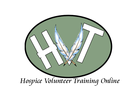Darren Hauck for The New York Times Millie Fischer, 63, left, and her mother Mildred Gordon, 88, right, at St. Ann Center for Intergenerational Care in Milwaukee in 2008.
The concept of a “holiday” is an elusive one for the over 28 million people in the United States who provide care for someone age 75 or older. A 2009 National Alliance for Caregiving/AARP study found that 88 percent of family caregivers never get a break from this full-time job. As readers here know all too well, the non-stop effort can take both a physical and emotional toll over time.
Jill Kagan, who has chaired the National Respite Coalition since 1994, hopes to change all that — not household by household, but at the policy level. She is determined to help caregivers who can’t afford private options find a way to catch their breath.
Respite advocates face a Goliath-sized challenge on a decidedly David-sized budget. Authorized by Congress in 2006, the Lifespan Respite Care Program was intended to support and expand the delivery of respite services nationwide. In each of the last two years, the federal Administration on Aging has provided $2.5 million to the program, the bulk of it granted to individual states to develop their own initiatives.
Twenty-four states have received these grants, but the funding has not yet made respite services widely available to caregivers, according to Ms. Kagan.
“Each state has a $200,000 grant over three years,” she said. “They are doing some incredible things to identify, streamline and coordinate services, do public awareness and maybe leverage some other federal, state and private funding sources. But very few will actually be able to provide services to very many people directly at this time.”
Respite care is in desperate need of a systematic solution, Ms. Kagan believes. The Lifespan program is a first step. The immediate goal for state grantees is the creation of what Ms. Kagan calls “model infrastructures” ending the duplication of services and bringing about some coordination. Progress varies by state: Those with more active existing respite programs should be able to fund services more quickly than those only starting to address the issue.
The respite program covers caregivers “across the lifespan” — that is, people who care for disabled children as well as for parents and spouses.
According to studies by The Commonwealth Fund and Evercare, a subsidiary of the insurer United Healthcare, these caregivers are less likely to be employed, likelier to miss work if they are employed, and often don’t have medical insurance. They are less healthy as a group than people who aren’t caregivers.
Ms. Kagan says there is a particular need among those who care for the elderly, especially if the caregiver is older as well. Among those older than 66 and experiencing stress related to caregiving responsibilities, there is a 60 percent higher mortality rate, compared to non-caregivers who are in the same age group.
“Meaningful quality respite is the first thing I would make sure every caregiver has access to,” said Ms. Kagan. “It is what most caregivers have on the top of their lists. There is a continuum of other services that caregivers desperately need, but without just a moment to step back and take a rest, how are they supposed to figure out what they need, let alone have the energy, time, and resources to seek it out?”
The A.R.C.H. National Respite Network’s “The ABCs of Respite” is a primer on what kind of help is available and how caregivers might avail themselves of various services. The network’s locator service helps families find and pay for respite services regardless of the age of the person being cared for. The National Caregiver Support Program, administered through local Area Agencies on Aging, focuses specifically on funding respite for those caring for aging friends or relatives.
There are also volunteer and faith-based programs that provide occasional respite.
None of it comes near to making a dent in the needs of the caregiver population, according to Ms. Kagan. The goal of the National Respite Coalition is “to keep respite policy and funding alive,” Ms. Kagan said. “The grassroots movement has grown, and we have formed over twenty active state respite coalitions.”
The coalition hopes to see funding for the Lifespan program raised to at least $5 million next year. But with the economy still in the doldrums and a new Congress reluctant to fund new social programs, Ms. Kagan said, the prospects seem increasingly unlikely.
Tuesday, January 4, 2011
Wanted: A National Respite System
Subscribe to:
Post Comments (Atom)






No comments:
Post a Comment